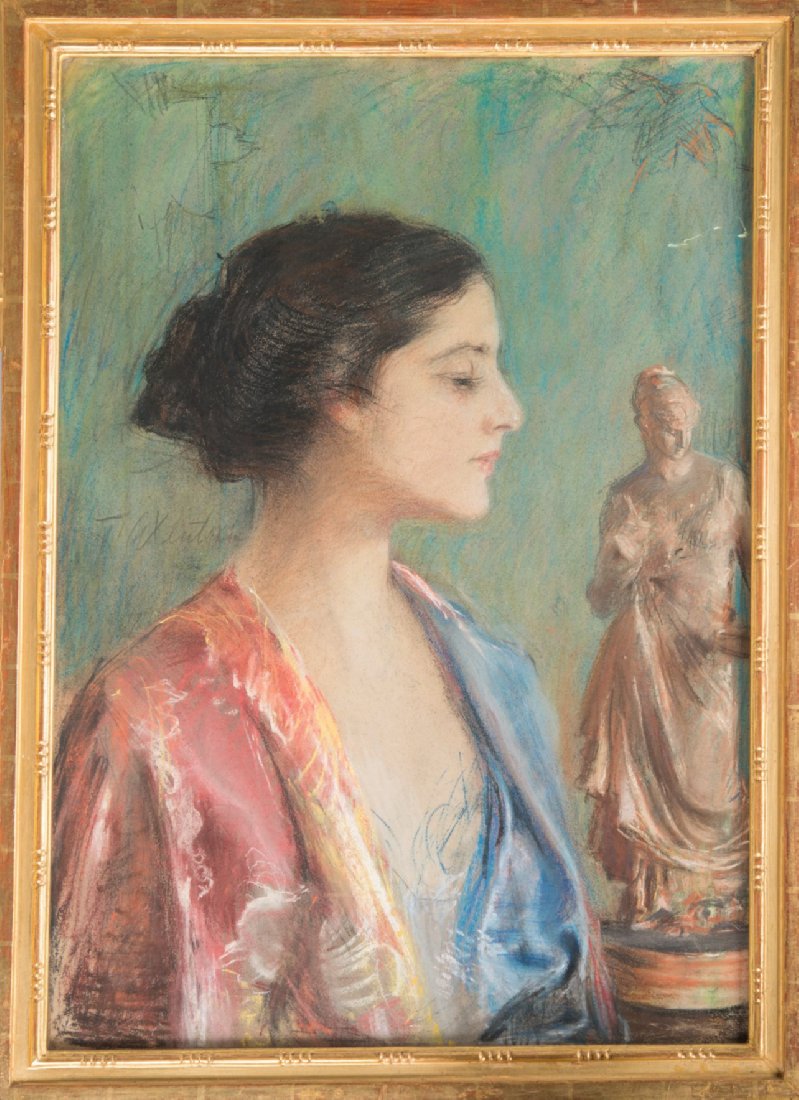Description:
In the works of Teodor Axentowicz (1859-1938), we can find influences of Impressionism, Symbolism, Secession and a fascination with Japanese art. His delicate, sophisticated technique of creating portraits allows us to define it as a “modern trend, shaped by Japanese art, where extreme naturalism is preserved with the line, preserved drawing. To be such an artist, you need to know a lot and feel a lot, but above all, you need to be able to search, find and exploit.” *
Description of the painting:
Axentowicz’s portrait depicts a profile of a young woman shown in a residential interior. Her eyes are closed, she is lost in thought. “This reverie, so often encountered in the faces painted by him, this enigmatic sentiment, marked by subtle touches of the brush or pencil, seems to be a beloved creative motif of the artist.”**
The model’s dark hair was tied up in a bun. She was painted in a casual home outfit, thus in a very intimate setting. The parted hems of the oriental pink-blue silk robe draped over her shoulders reveal a fragment of white underwear adorned with lace. On her left side is a figure of a woman in a voluminous dress, holding an unspecified object in her right hand, gesturing with her left hand with an upraised index finger suggesting that one should pay attention to it.
The portrait and figurine were portrayed on a blue-green, grandly outlined background, on which only sketchy grapevine leaves appear.
It is difficult to unambiguously identify the figure painted by the artist. Perhaps it is Janina Poznańska, whom Axentowicz painted several times in the same year 1910.
The comparison of a young woman’s profile with the figurine standing next to her allows for a comparison of both images. The same appears to be a subdued, melancholic, contemplative mood of the representations. Through its connection with the sculpted image, the idealism of the preserved proportions and symmetry of the female profile is highlighted. The primacy of painting in this approach lies in the possibility of conveying the inner complexity of the figure. The external tranquility and stagnation conceal an incredibly complex inner world. No gesture or held object reveals it, only the expression on the face.


